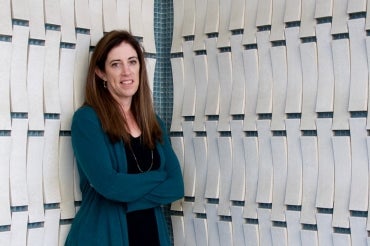Breast cancer “decision tree” helps women navigate treatment options

Published: November 3, 2016
A free information tool largely designed by breast cancer survivors and a University of Toronto medical anthropologist is now available online to explain treatment options for the most common form of cancer in women.
Breast cancer “decision trees” that map out treatment options for every form of the disease are a key feature of the website, which also includes information about the many types of the cancer and easy-to-understand explanations of the medical terminology.
“There is no other tool like this anywhere in North America,” says Kristin Bright, assistant professor, teaching stream, in U of T’s Faculty of Arts & Science. “Everything from the language and graphics to the colours and fonts is informed by patients and survivors.”
See the decision tree
With many patients facing surgical treatment within a few weeks of diagnosis, the site is meant to help them understand their disease and consider their options.
“A lot of people leave their doctor’s office feeling they either got too much information or too little, and they’ve heard medical terms that haven’t been explained,” says Bright, who was at the New York University School of Medicine and Perlmutter Cancer Center before joining U of T.
“When they go into the decision tree, they’ll see a short description, and then they can choose to read more. It’s sort of an iterative design so you’re not getting too much information at once.”
While the type of breast cancer may dictate certain procedures that must be followed quickly, there will also be decisions the patient has to make, notes Bright.
These include choosing radiation or chemo treatment before or after surgery, and whether to have immediate breast reconstruction or to wait until later.
The tool is not intended to be used in isolation but to empower the patient to discuss the information and options with their care providers, Bright says. She adds that the designers anticipate that the site will reduce anxiety and improve communication.
It’s also an important education tool, Bright says.
“In a very diverse population like Toronto, that’s important because people might have pre-existing ideas or concepts of what a tumor might be.”
Bright recalls a patient she interviewed while in New York who was from Haiti. The woman put off surgery for two years because, like many in her community, she thought the lump in her breast was caused by menopausal blood that would dissipate.
The site is accessible on any browser or mobile device and is still in the testing phase. Bright and a team of advisors and clinicians have been working on the site for two years, and they hope to gather more feedback from visitors that they can incorporate prior to its official launch in June 2017.
The text is written in Grade 8 English and it will be translated for a French-language site before the official launch.
As the site grows and develops over time, the designers hope to add information about post-treatment care, survivorship resources, and complementary and alternative care such as acupuncture, massage and meditation.
Bright also hopes the site could eventually contribute to existing patient advocacy movements to improve care in underserved areas by raising awareness.
Startup funding has come from a grant from the Canadian Internet Registration Authority (CIRA).That money will take the website through the launch next year, and then Bright will be looking for additional funders.
“We’re hoping to spread the word so that people can see that this is often a manageable disease, and there is life after breast cancer,” says Bright.
“I also hope that this tool will help people understand they need to continue monitoring their health, even after treatment.”



